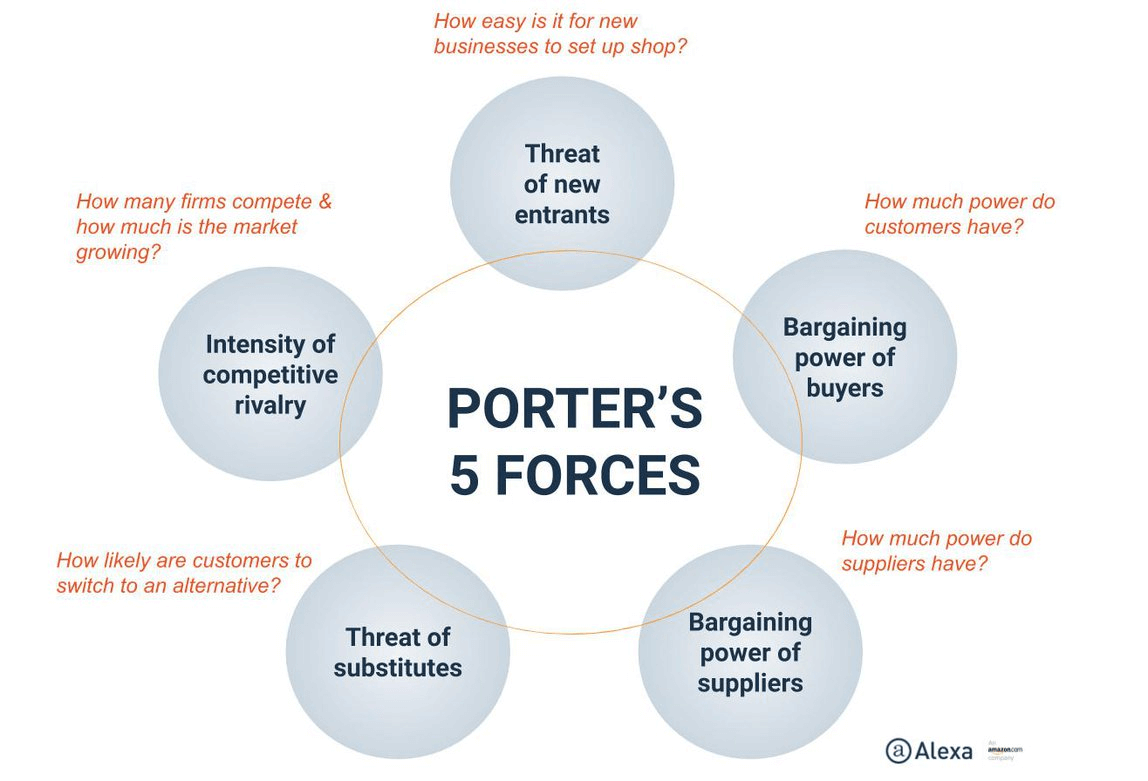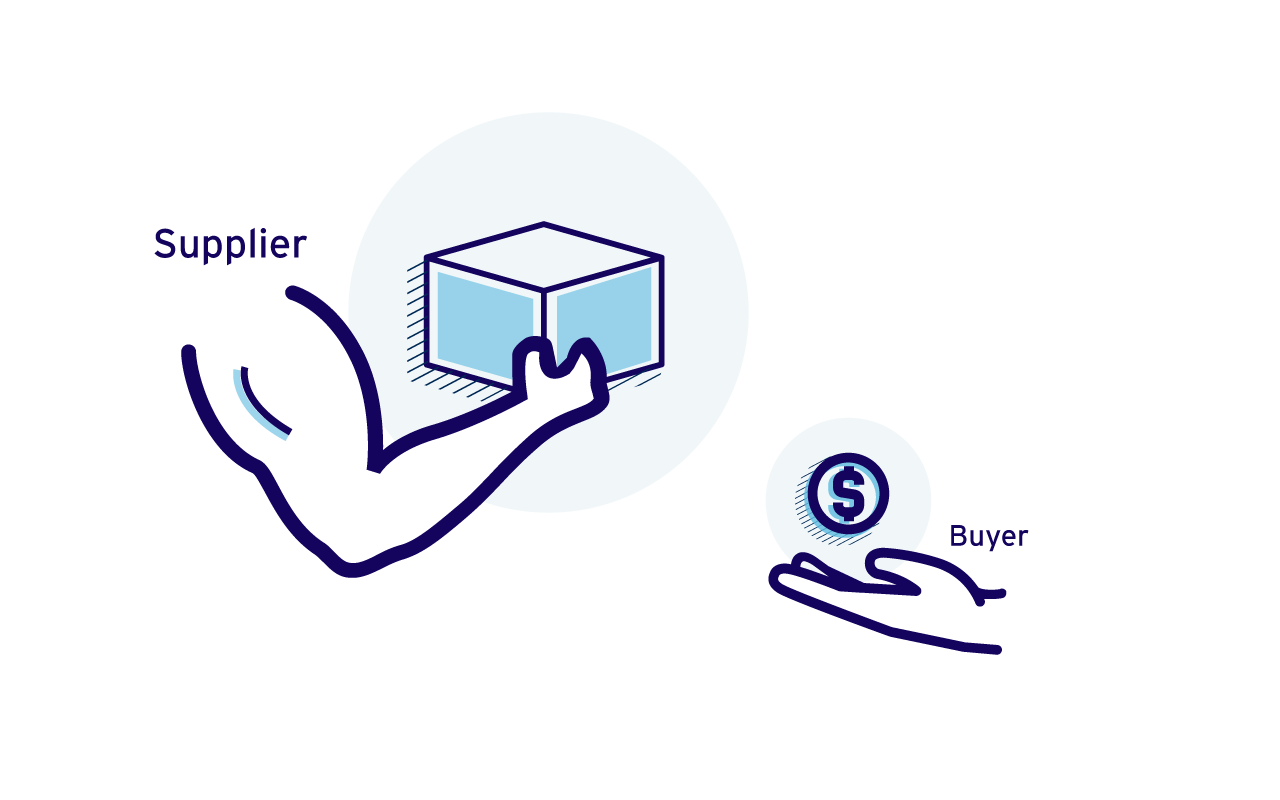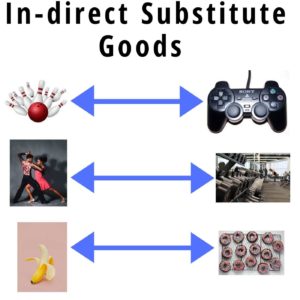What are Porter’s Five Forces?
Porter’s Five Forces is a model made up of 5 parts; Competitive Rivalry, Supplier Power, Buyer Power, Threat of Substitution, and Threat of Entry. The model helps business professionals determine an industry’s weaknesses and strengths.

Using the five forces allows companies to analyze their competitive environment to come up with a strategy to improve their competitive advantage. The model also allows businesses to improve their profitability by giving them more information on: the number of competitors, the power of their competitors, potential new market entrants, the suppliers, the customers, and possible substitute products.
1. Competitive Rivalry
Competitive rivalry focuses on the intensity of the competition within an industry. There are a variety of different factors that determine competitive rivalry: multiple equally balanced competitors, slow industry growth, high fixed costs, lack of differentiation, capacity increases, diverse competitors, high strategic stakes and high exit barriers. When studying competitive rivalry within an industry, it is important to know that companies are mutually dependent, therefore, the pattern that forms from the actions and reactions of one company can have potential harm to other companies in the industry.

2. Supplier Power
Supplier power is the study of the level of influence suppliers have on businesses within an industry. Depending on the industry there are a variety of types of suppliers: manufacturers and vendors, distributors and wholesalers, independent suppliers, importers and exporters, and drop-shippers. Some ways suppliers influence companies include raising prices, adjusting quality, and reducing product availability. The determining factors of bargaining supplier power include: the number of suppliers compared to buyers, dependence of a supplier’s sale on a specific buyer, switching costs, the availability of suppliers, and the possibility of forward integration.
3. Buyer Power
The power of buyers can be strongly influenced by consumers. Consumers influence businesses to improve product quality, improve customer service and even lower prices. Determining factors of buyer power are similar to the same as the determining factors of supplier power. The determining factors of buyer power consist of the number of buyers related to the number of suppliers, the dependence of a buyer’s purchase has on a supplier, switching costs, and backward integration.

4. Threat of Substitution
A substitute product is a product that offers the same or very similar benefits as a product that is being sold in the same or even in another industry. Companies that have multiple substitutes have very little control over prices or how to sell the product. Companies can take action against substitutes; these actions include:
- Differentiation
- Customer value
- Brand loyalty
Some examples of specific actions a company can take are identifying customers that can possibly switch over, building relationships with customers, educating customers about the product, offering special packages, reassuring customers that they’re reliable, and working to build and maintain customer loyalty.


5. Threat of Entry
When analyzing the threat of entry into an industry there are two equations to understand:
High Barriers to Entry = Low Threat of New Entrants = Increased Profit Potential
Low Barriers to Entry = High Threat of New Entrants = Reduced Profit Potential
Competitors that enter a new market can threaten market share and the profitability of the existing competitors in the industry. New threats can result in changes to the quality of products along with the prices of the products that are currently being sold in the market. The threat of new entrants effect: barriers to entry, economy of scale, brand loyalty, capital requirements, cumulative experience, government policies, access to distribution channels, and switching costs.


